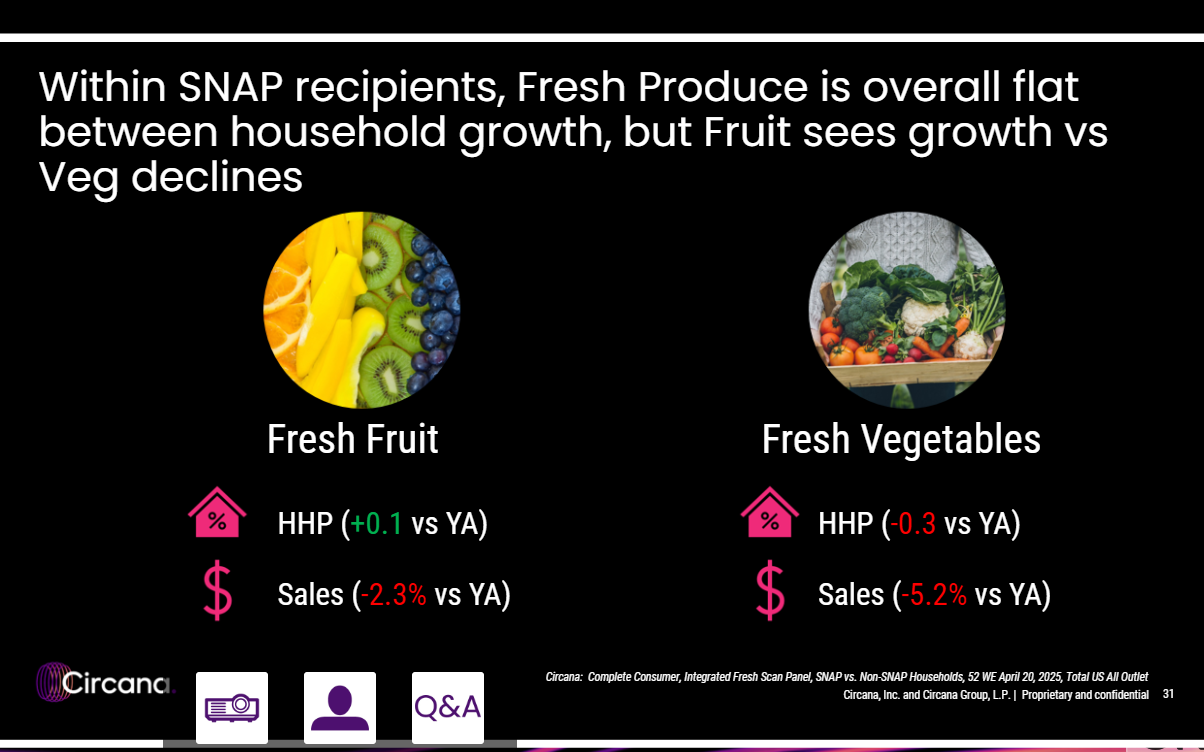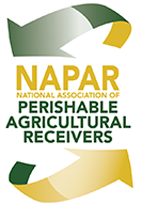As of Sept. 1, cuts to the Supplemental Nutrition Assistance Program (SNAP) benefits went into effect nationwide, potentially tightening food budgets for millions of Americans.
While the fresh produce industry might feel the ripple effects, new data presented during an International Fresh Produce Association (IFPA) and Circana webinar, “Challenge Consumer Assumptions to Steer the Future of Produce and Floral,” suggests that opportunities remain to connect with SNAP shoppers, even in a constrained spending environment.
“IFPA and Circana did a study, and we specifically isolated SNAP recipients' behavior in their buying across all U.S. retail outlets,” says Jonna Parker, Principal II for Circana Fresh Center of Excellence. “We found that SNAP verified recipients … held steady on their purchases of fresh fruit, but we did see some erosion [in] fresh vegetable purchases. We did see dollar spend decline in SNAP recipients, and we also know that the SNAP benefits have been shrinking. So that isn't unique to fresh fruits and vegetables, but SNAP recipients are spending less.”
The pullback, however, is not primarily about cost.
“This isn't necessarily a vegetables-are-priced-too-high issue with SNAP recipients,” Parker says. “It is a, ‘Oh, I don't know if I'll use all that or how to use all that before it goes bad.'”
That perception of convenience and usability may be as important as price when engaging low-income consumers, Parker adds.
The study did see growth in cabbage, Brussels sprouts and squash, Parker says.
“Now, SNAP beneficiary spends did fall a bit behind total U.S. behavior on those three commodities, but again, just like we said in fruit, if a product is relevant to how someone wants to eat or explore or taste, whether they're a SNAP beneficiary or not, they may spend more than you might think on that type of fruit or vegetable,” Parker says.

Interestingly, the study showed growth in SNAP spending on some higher-value or specialty fruits.
“For example, lime has seen a 27% increase in the produce department among SNAP recipients' spending; kiwis have seen a 21% increase. Notice this … those aren't necessarily the cheapest things. In fact, you can buy lime juice that sits in your fridge for probably $2 or $3 [instead of fresh]. Kiwis are definitely not the cheapest fruit. But, just like the other consumer groups who are not on SNAP programs, we have seen products like mandarins, avocados and kiwis be incredibly relevant and exciting, especially to younger consumers.”
Staple vegetables also showed promise, particularly those tied to popular cooking habits.
“Onions and garlic are continuing to grow for SNAP recipients … our at-home data shows an increase in one-dish and bakeable recipes, many of which use those staples,” Parker says.
The timing of these insights is critical. With the Sept. 1 budget cuts reducing monthly SNAP allotments, low-income shoppers could increasingly weigh how far fresh produce fits into meal planning.
“For fresh fruits and vegetables, in theory, they should be promoted even more as something SNAP beneficiaries can use their food benefits for,” Parker says.
The data suggests SNAP shoppers are not uniformly trading down to cheaper produce, but are instead balancing value with relevance, excitement and usability.
As SNAP households possibly stretch tighter budgets this fall, positioning produce as both affordable and exciting could help retailers maintain — and even grow — connections with these important consumers.










